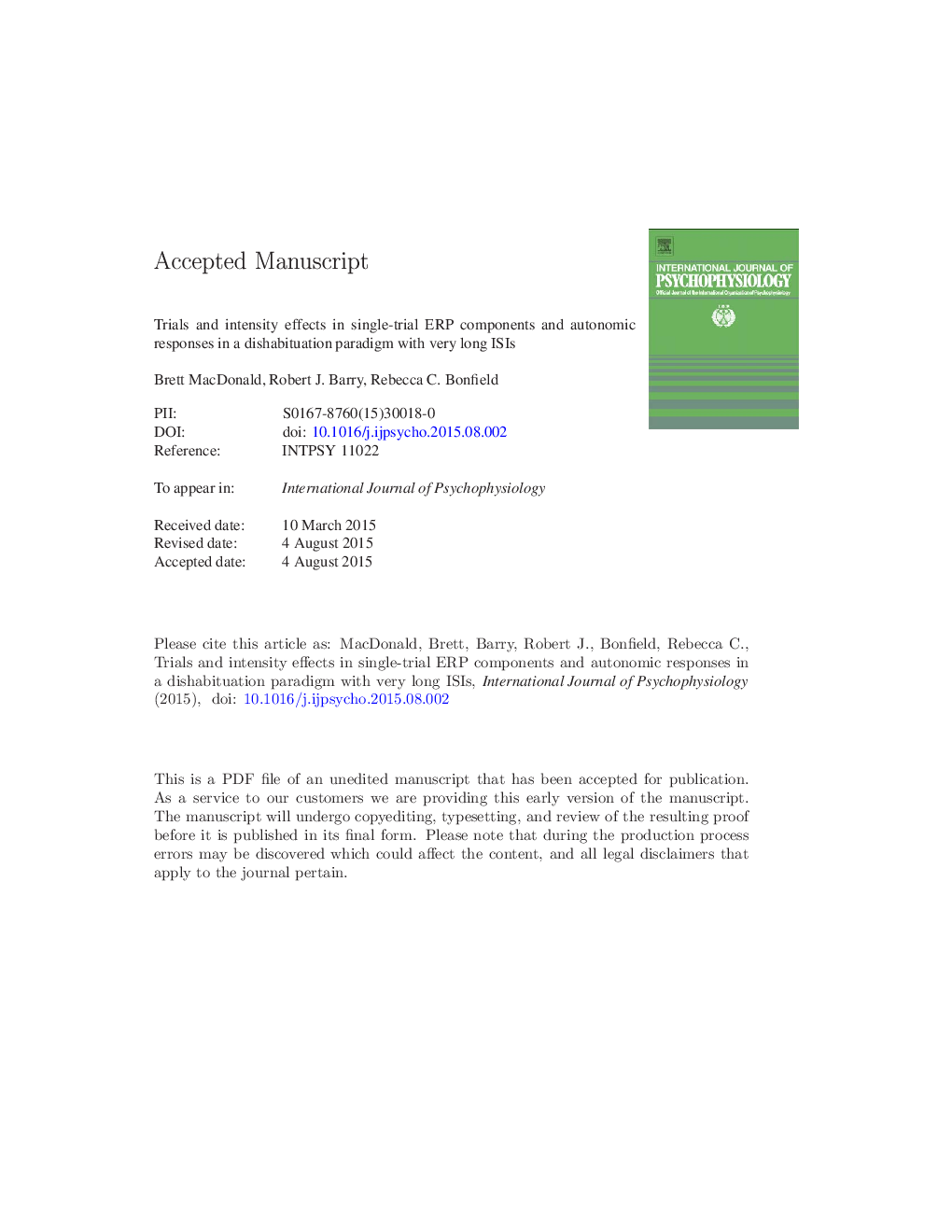| Article ID | Journal | Published Year | Pages | File Type |
|---|---|---|---|---|
| 7295179 | International Journal of Psychophysiology | 2015 | 67 Pages |
Abstract
The phasic orienting reflex (OR) was investigated using single-trial data collected concurrently from 4 autonomic measures and event-related potentials (ERPs). In an auditory dishabituation paradigm, twelve indifferent tones of two intensities (60 or 80Â dB, intensity change on trial 11, counterbalanced between subjects) were presented at very long interstimulus intervals (ISIs). Novelty and intensity based stimulus-response patterns were examined seeking ERP analogues of autonomic measures representing pre-OR and OR processing. Skin conductance response (SCR) represented the phasic OR index. EOG-corrected ERP data for 16 subjects were decomposed by a temporal Principal Components Analysis (PCA). SCR diminished over 10 standard trials, recovered on change trial 11, dishabituated to the re-presentation of the standard tone on trial 12, and showed intensity effects at the change - formal requirements for an OR index. The evoked cardiac response (HR) showed no trial or intensity effects. Respiratory pause (RP) decreased linearly over trials and showed recovery but no dishabituation or intensity effect. Peripheral vasoconstriction (PVC) failed to decrement but exhibited an intensity effect. Ten identifiable ERP components were extracted: Na, P1, N1-1, PN, P2, P3a, P3b, a novelty-sensitive HabP3, an intensity-sensitive IntP3, and the Slow Wave (SW). Pattern 1 showed no trial or intensity effects (HR, P1, PN, P2); Pattern 2 showed no trial effect but an intensity effect (PVC, Na, N1-1, P3a); and Pattern 3 demonstrated habituation and an intensity effect (SCR, RP, P3b, HabP3, IntP3, SW). The observed fractionation of autonomic and central measures is consistent with Preliminary Process Theory (PPT) rather than the notion of a unitary OR.
Related Topics
Life Sciences
Neuroscience
Behavioral Neuroscience
Authors
Brett MacDonald, Robert J. Barry, Rebecca C. Bonfield,
